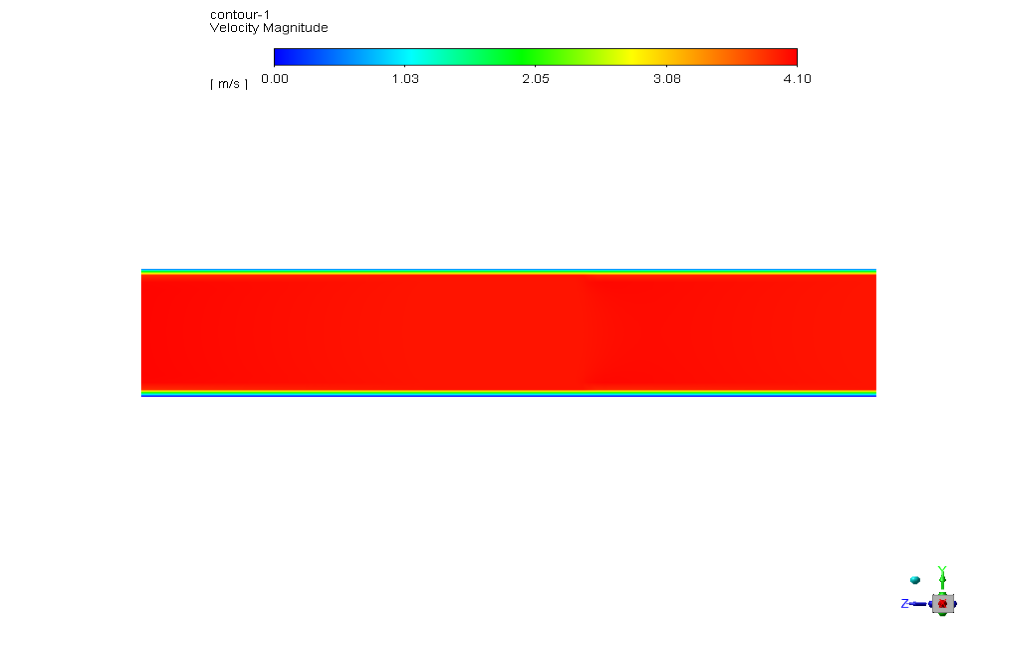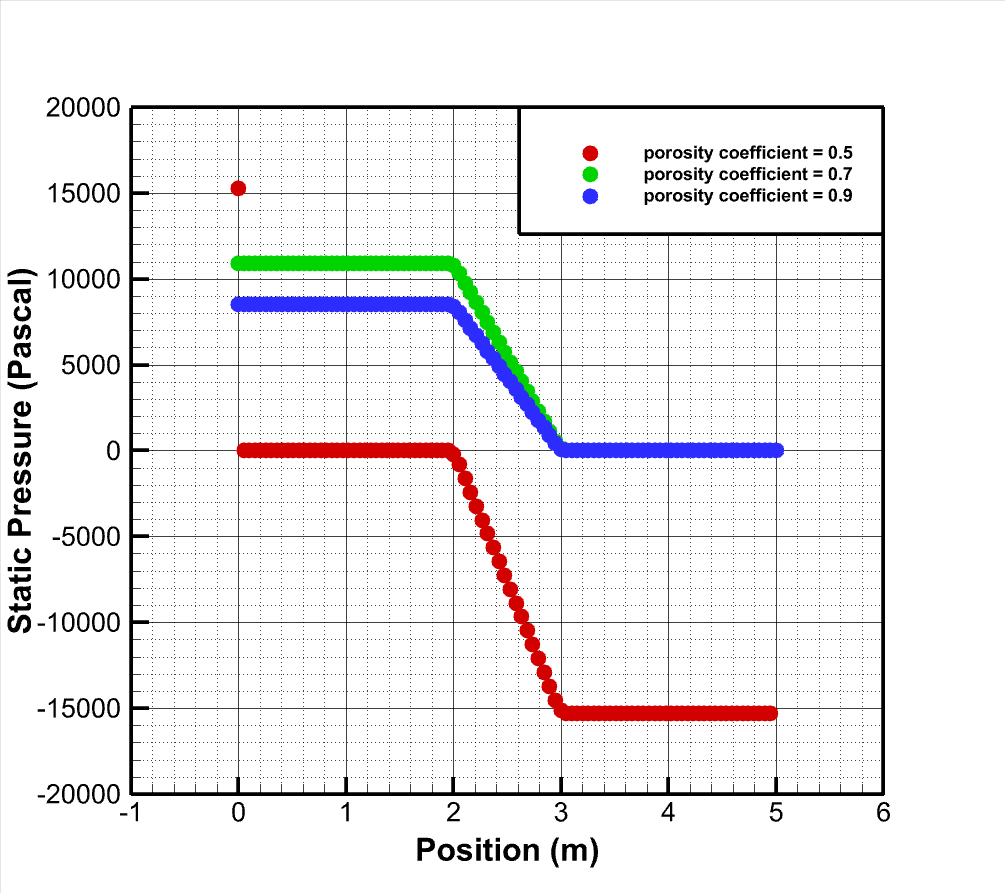Flow Behavior Passing Through a Porous Medium, ANSYS Fluent Training
Free
- The problem numerically simulates fluid behavior inside porous media using ANSYS Fluent software.
- We design the 3-D model by the Design Modeler software.
- We Mesh the model by ANSYS Meshing software.
- The mesh type is Structured, and the element number equals 35017.
- We use the porous tab in our model to investigate the different porosity effects on fluid behavior.
To Order Your Project or benefit from a CFD consultation, contact our experts via email (info@mr-cfd.com), online support tab, or WhatsApp at +44 7443 197273.
There are some Free Products to check our service quality.
If you want the training video in another language instead of English, ask it via info@mr-cfd.com after you buy the product.
Description
Description
The present study investigates fluid behavior inside porous media by ANSYS Fluent software. We perform this CFD project and investigate it by CFD analysis.
A porous medium comprises mostly perforated materials and contains pores and void spaces within itself. Various body tissues, such as skin, bones, kidneys, and lungs, can be considered a porous medium.
Porous media are widely used in various industries such as food, oil, textiles, building materials, insulation, filters, and membranes. In this project, fluid flow through a porous medium with three different porosities is investigated.
The fluid domain consists of an upstream flow domain, a porous medium domain, and a downstream flow domain. The geometry of this project is designed in the ANSYS design modeler and is meshed in ANSYS meshing. The mesh type is structured, and the element number is 35017.
Porous Method
The porous tab in the computational zone is used to define the porous medium in this model. The most important factor for defining a porous medium is the porosity coefficient. This value is equivalent to the ratio of empty space to total space.
Whatever this value tends to zero means that fluid can’t pass at all, And whatever this value goes to one means that all the fluid passes completely.
In this project, three different porosities have been used to compare the results with each other and thus determine the effect of the presence of a porous medium in the fluid flow. The porosity coefficient used is equal to 0.5, 0.7, and 0.9.
Porous Conclusion
After simulation, the contours of pressure, velocity, turbulent viscosity, and static pressure drop alongside the cube are obtained. The contour and pressure diagram shows that the fluid flow is subjected to pressure drop as it passes through the porous medium.
This phenomenon indicates that the presence of a porous medium properly affects the fluid’s behavior because the main task of these porous materials is to reduce the pressure of the passing fluid.
[/vc_column_text][/vc_column][/vc_row]









Effie Rolfson DVM –
Can this simulation model the effect of different fluid velocities?
MR CFD Support –
Yes, the simulation can account for different fluid velocities, which can significantly affect the flow behavior and pressure drop.
Leland Veum –
How accurately does this simulation predict the pressure drop across the porous medium?
MR CFD Support –
The simulation provides a highly accurate prediction of the pressure drop across the porous medium, taking into account the properties of the fluid and the porous medium.
Oswaldo Franecki –
could you please explain about modeling the interaction between the fluid and the porous medium?
MR CFD Support –
A: The simulation uses a sophisticated model to accurately capture the interaction between the fluid and the porous medium, including the effects of porosity and permeability.
Shanna Renner –
The training product effectively demonstrated the impact of a porous medium on fluid behavior. It was fascinating to see the change in pressure, velocity, and turbulent viscosity with different porosity levels.
MR CFD Support –
Thank you for your feedback! It’s great to hear that the training enhanced your understanding of fluid dynamics through porous media. We are always here to provide informative simulations and help clarify complex concepts in CFD.
Colleen Nitzsche –
What was the impact of changing the porosity values on the fluid flow through the porous medium in the simulation?
MR CFD Support –
With different porosity values, the simulation showed alterations in the pressure drop and the velocity of the fluid as it moved through the porous medium. A higher porosity led to a lower pressure drop, indicating less resistance to the fluid flow, while a lower porosity increased the fluid’s resistance, resulting in a higher pressure drop. These variations highlight the porous media’s role in influencing fluid behavior, essential for modeling real-world applications in different industries.
Uriel Doyle –
I have a question: ‘Does it predict the impact of the porous medium on the fluid’s velocity distribution?’
MR CFD Support –
Yes, the simulation provides detailed information about the fluid’s velocity distribution as it passes through the porous medium.
Judge Champlin V –
How does the simulation account for the energy loss in the system?
MR CFD Support –
The simulation includes models for various types of energy losses, including friction and turbulence, to provide a realistic prediction of system performance.
Abigayle Thiel –
After learning from this product, how can one calculate the exact pressure drop across a porous medium with a different porosity than the ones provided in the project?
MR CFD Support –
The pressure drop across a porous medium can be calculated using Darcy’s Law, which correlates the pressure drop with fluid velocity, viscosity, and medium’s permeability and porosity. In ANSYS Fluent, once you have defined the porosity in the porous zone, the software automatically incorporates it into the flow calculations. To model a different porosity value, you would adjust the porosity coefficient in the porous media settings, and the software would then simulate the flow accordingly to give you the new pressure drop results.
Erick Schuster –
I was fascinated by the effects of porosity on pressure drop. Could you explain how much difference the pressure drop is between the porosities of 0.5 and 0.9?
MR CFD Support –
In the simulation, the difference in pressure drop between porosities of 0.5 and 0.9 is significant. A lower porosity, such as 0.5, indicates a denser porous medium, leading to a higher pressure drop. Conversely, a higher porosity, like 0.9, suggests a more open structure with less resistance, resulting in a lower pressure drop. The exact value of the pressure drop difference varies depending on the specific flow conditions and characteristics of the porous medium.
Prof. Liliane Cormier –
The description mentions using three different porosities. Could you tell me how you set up or defined the various porosity coefficients in ANSYS Fluent?
MR CFD Support –
In ANSYS Fluent, the porosity coefficients were defined using the porous zone model. This is accomplished by specifying the porosity values (0.5, 0.7, and 0.9 for this project) within the porous media domain’s cell zone conditions. Each porosity value was tested in separate simulations to observe the effect on fluid behavior and pressure drop across the porous medium.
Ubaldo Hill –
I really loved how comprehensive the training was! The detailed explanation of porosities and its clear effects on fluid flow created an enriching learning experience.
MR CFD Support –
Thank you so much for your kind words. We are thrilled to hear that you found the training on fluid behavior in porous media enriching and comprehensive. Your feedback is greatly appreciated!